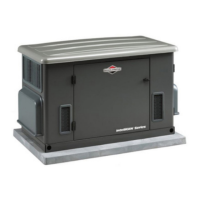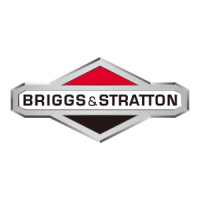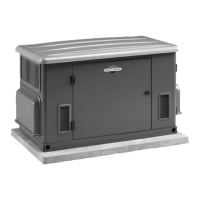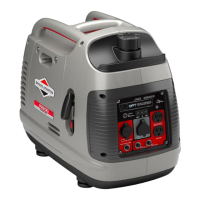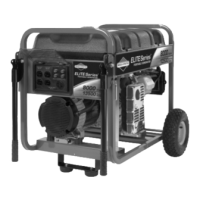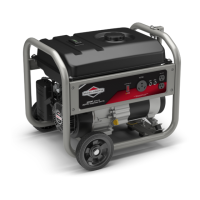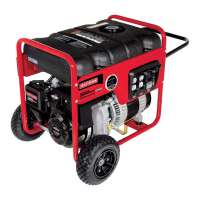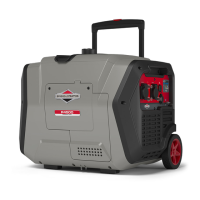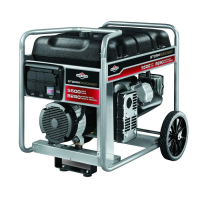9
Essential Circuit Selection
When selecting the essential circuits that will be switched
to “Standby Power,” it is important that the sum of the
combined circuit loads does not exceed the wattage/
amperage capacity of the generator. To help you with your
selection of essential circuits, please consider the following:
• Addupthetotalwattageofallelectricaldevicestobe
connected at one time. This total should NOT be greater
than the generator’s wattage capacity.
The rated wattage of lights can be taken from light
bulbs. The rated wattage of tools, appliances and
motors can usually be found on a data plate or label
affixed to the device.
• Iftheappliance,toolormotornameplatedoesnot
list wattage, multiply volts times the ampere rating to
determine watts (Volts x Amps = Watts).
Some electric motors (induction types) require about
three times more watts of power for starting than for
running. This surge lasts for only a few seconds. Be
sure you allow for this high starting wattage when
selecting electrical devices that will be energized by the
home generator:
• Figurethewattsrequiredtostartthelargestmotor.
• Addthattothetotalrunningwattsofallother
connected loads.
This generator complies with the following “stationary
standby power rating”:
As a home generator owner, it is important that you
clearly identify the circuits in your building that are
“essential” to you. Your installer will then know which
circuits you want to include as “Essential Circuits”.
Depending on the power consumed by these circuits,
most or all of them can be switched to the home
generator for the duration of normal power interruption.
The wattage reference table that follows will assist you
with your decision-making process. It provides the
wattage used by many ordinary household devices.
Use it when selecting your essential circuits. Review
this information with your installer and ask about
any technical considerations that might affect your
installation. This chart serves as a guide only. For exact
wattage use an appropriate wattage meter.
Use the wattage reference table provided and mark those
circuits you consider “critical” or “essential”. Make sure you
and your installer consider the system’s altitude above sea
level and the ambient temperature range when determining
total generator load.
In a utility outage, you need to ‘manage’ power distribution
by turning off non-essential loads. Some examples of non
essential loads are as follows:
• Poolpump
• Hottub
• Electrichottuband/orpoolheaters
• Centralairconditioners
• Electrichotwaterheaters
• Electricrangeand/oroven
• Arcwelder
• Nonessentialelectricheaters
Delivery Inspection
Carefully inspect the home generator for any damage that
may have occurred during shipment.
If loss or damage is noted at time of delivery, have the
person(s) making delivery note all damage on the freight
bill and affix his signature under the consignor’s memo of
loss or damage. If loss or damage is noted after delivery,
separate the damaged materials and contact the carrier and
your installer for claim procedures. Missing or damaged
parts are not warranted.
The home generator is supplied with:
• Pre-attachedmountingpad
• Fully-servicedoil/lubricatingsystem
• Flexiblefuelhook-uphose
• Installationandstart-upmanual
• Operator’smanual
• Engineoperator’smanual
• Installationchecklist
• Spareaccessdoorkeys
• Spare15Afuse
• Twopinconnector
• Tenpinconnector
• Touchuppaint
• RemoteLEDindicatorkit(LED/plate/screws)
To be supplied by Installer:
• Startingbattery
• Connectingwireandconduit
• Fuelsupplyvalves/plumbing
• Variousspecialtytools/equipment

